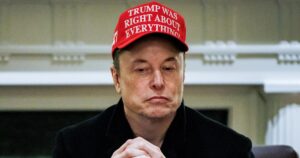Key takeaways:
- President Trump’s tariff policy, particularly targeting Chinese imports, is expected to affect electronic device pricing, with a significant 104% tariff on Chinese goods potentially raising consumer costs for products like iPhones.
- The announcement of tariffs has led to financial market volatility, with increased U.S. borrowing costs and fluctuations in stock markets, although a temporary pause in tariff hikes for some trading partners led to a notable rise in the S&P 500 index.
- The tariff policy has sparked concerns about increased costs and supply chain disruptions, as businesses and consumers monitor the economic implications and the complexities of international trade.
President Donald Trump’s tariff policy is poised to affect the pricing of electronic devices, particularly Apple iPhones, as new tariffs on foreign nations are introduced. Initially set to take effect on Wednesday, these tariffs have been postponed for 90 days, except for those on Chinese imports. The tariffs are part of a broader strategy by the Trump administration to address trade imbalances, but they have sparked significant reactions in global markets.
The announcement of the tariffs has led to volatility in financial markets, with U.S. government borrowing costs increasing and stock markets experiencing fluctuations. The S&P 500 index saw a notable rise of over 9%, marking its largest increase since 2008, as investors reacted to the temporary pause in higher tariff rates for several trading partners. However, the baseline 10% tariff implemented the previous week remains in place.
In a significant development, the White House declared its intention to impose a 104% tariff on all Chinese goods imported into the United States. This move is expected to impact the cost of electronics, including popular products like iPhones, potentially leading to higher prices for consumers. The decision to raise tariffs on China to a total of 125% underscores the administration’s focus on addressing trade issues with the country.
The tariff policy has prompted a range of responses from various sectors, with concerns about the potential for increased costs and disruptions in supply chains. As the situation develops, businesses and consumers alike are closely monitoring the implications of these tariffs on the economy and the prices of electronic devices. The ongoing trade tensions highlight the complexities of international trade and the challenges of balancing economic interests.



Be First to Comment